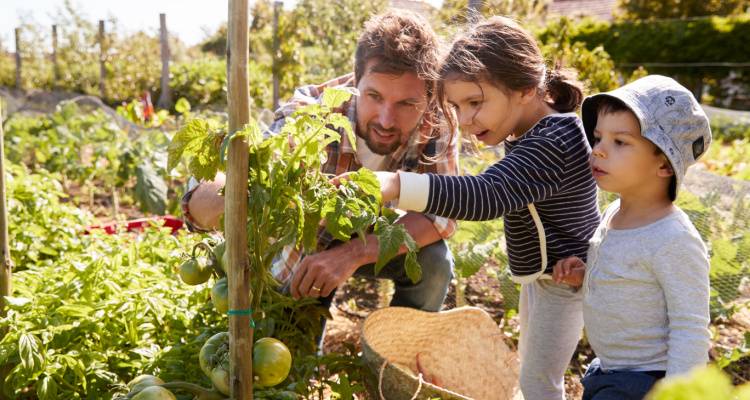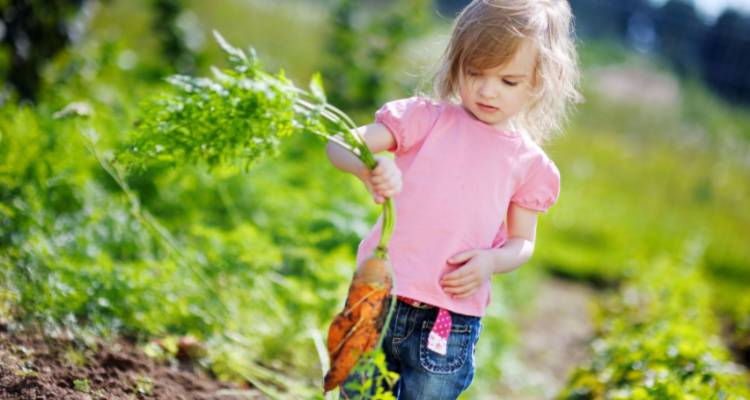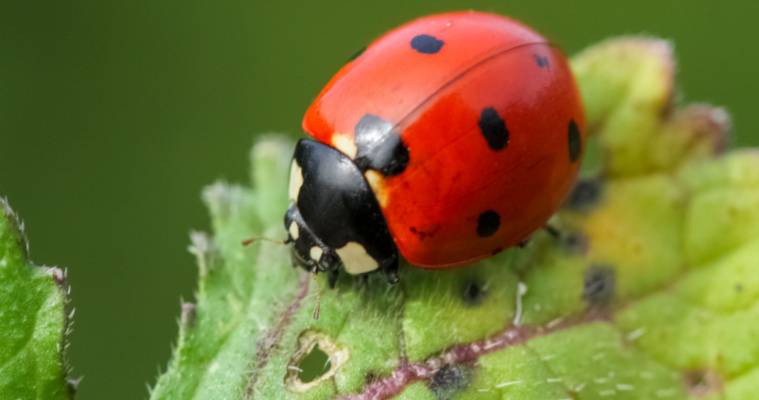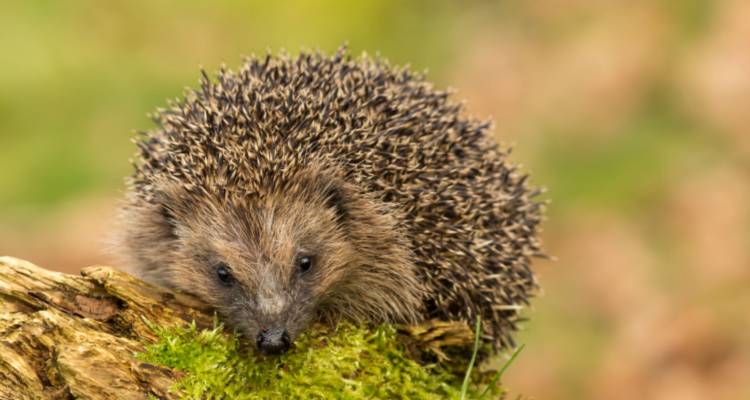Garden Activities for Kids
Children need to be raised in a healthy, balanced way. To achieve this balance, it’s essential to create activities for kids that help improve their mental and physical health.

In this article, we’ll examine the benefits of introducing children to outdoor activities and the numerous ones available. So, if you are a parent looking for ideas with which to engage your kids, then read on.
Table of Contents
- Why Are Outdoor Activities for Children Important?
- Gardening With Kids
- Searching for Insects With Kids
- Wildlife Observation for Kids
- Outdoor DIY for Kids
- Outdoor Games for Kids
- FAQ
Why are Outdoor Activities for Children Important?
There are numerous reasons why outdoor activities are important for kids. First, there is a direct correlation between physical activity and mental well-being.
More so, in an age dominated by technology that is designed to keep kids indoors, outdoor activities for kids have become more important than ever. That being said, we’ll first examine some of the reasons it is so important for your child to spend some time in the sun.
Increases Exposure to Sunlight
No matter how well-lit your home is, you can never beat the amount of exposure to sunlight a couple of hours outdoors will provide. Adequate exposure to sunlight is vital to kids; among other things, it helps children maintain a healthy sleep pattern.

Also, exposure to sunlight ensures an adequate amount of vitamin D is supplied to aid with muscle growth and function, bone development, and so much more. On top of that, bright lights encourage concentration in children which can improve the formation of synapses in the brain.
Limits Screen Time
For many kids, screen time needs to be limited, not only to prevent addiction but also to reduce the chances of poor eyesight. While there is currently no link between screen time and myopia, it is believed that overworking your near vision could propagate the development of myopia symptoms.
For this reason, it is advised that children get as much time outside as possible. Fun activities are a great way to make this happen.
Appreciate Nature
As a parent, you’ll likely agree that global warming is real and human overindulgence has been one of the reasons for the deterioration of the environment. Therefore, having children experience the outdoors helps them appreciate nature more, hence, developing a natural need to protect it.

Children are impressionable individuals, and the magic of nature usually has a profound effect on them. For this reason, playing in the woods, climbing a mountain, and experiencing nature, in general, is so important as it leaves an impression of how much there is to lose if the environment isn’t protected.
Encourages Social Interaction
No parent wants their child to become a recluse who is unable to properly function in society. But if cooperative play is limited from a young age, then the development of social skills stagnates. This could lead a child to become less friendly with people.
Admittedly, many children do get to socialize in school with other kids. However, this isn’t enough as the environment is more structured. Therefore, without learning to talk to other children in unstructured environments and making friends, other developmental needs are stagnated. Also, studies show that children who spend more time in green spaces are more likely to be cheerful and form friendlier relationships.
Develop Athletically
It’s no secret that children need regular exercise to develop properly, and playing outdoors is the best way to achieve this. While playing outdoors doesn’t necessarily guarantee athletic abilities (some kids just aren’t built that way), it does improve the chances of developing athletic skills. This is because they are more exposed to situations where they can run, jump, twist, and so on.
While these are all things that can be done indoors, there are fewer obstacles to deal with the outside which means a child can go full throttle with no problems. Not only that, but physical outdoor play has also been discovered to improve a child’s cognitive development.
Improves Risk-Taking
Children who spend time outside are less likely to be risk-averse. While this might be nerve-racking for parents, it’s vital to understand that risk-taking will only benefit the child as time goes on. Yes, they may fall and scrape their knee, which can be stressful for some parents, but these experiences also help children learn.
Therefore, they can take risks and test their boundaries which also leads to a greater amount of confidence in oneself. So, while you shouldn’t neglect to put safety precautions on your kids when they go out to play, don’t limit them too much as this doesn’t help.
Encourages Healthy Sleeping Habits
Are you struggling to put your kids to bed? Then consider tiring them out with more outdoor activities. While there is no proven link between outdoor activities and sleep times in children, there is the general belief that enough physical activity on any given day makes it easier for kids to fall asleep.
Why?
Well, it goes back to the first point, which is sunlight. Not only does sunlight provide vital vitamin D for children, but it also compels the brain’s clock to work more effectively.
Once the sun sets, this indicates the end of the day for a child and cues drowsiness. Therefore, the more children are allowed to step out and explore, the easier it will be to get them into bed.
It Improves Executive Functions
Executive function is defined as a set of mental skills that help with effectively navigating everyday life.
Some of these skills include flexible thinking and self-control, which help to develop problem-solving skills and so on.

Studies show that spending time outside where they have to develop their own games or figure out ways to ward off boredom helps children develop their executive function. On the flip side, the lack of executive function could lead to difficulty in handling emotion or following instructions.
Playing outdoors increases the chances of your child learning new words and concepts too. For example, children can better appreciate the concept of melting if they see the sun affecting their delicious ice cream while out on a walk.
Also, they are able to pick up new words, especially if they see it in action. Thus, spending time outdoors is an excellent way for kids to learn and broaden their horizons.
Gardening with Kids
Gardening is a great activity for kids as it gets them invested in the environment and is also a great opportunity for family bonding. It could also provide a lot of outdoor fun for kids since there are so many things to do.

Benefits
But what exactly can children learn about gardening? And why is it important for children to understand about gardening/growing fruit and vegetables? To thoroughly answer these questions, we have listed a few of the many learning benefits below;
They Appreciate Nature More
Learning about how flowers are born, how they enrichen the environment, and experiencing first-hand how beautiful they are when they bloom, is a sure-fire way to get your kids interested in nature and the environment.
Teaches Responsibility
The responsibility of watering the plants and maintaining them properly is a great way to understand the importance of accountability. Once they are aware that if they neglect a plant, it dies, they are likely to take their tasks seriously.
Encourages Healthy Eating
Struggling to get your kids to eat their vegetables? Why not have them grow it instead? When your child has to grow their carrots, lettuce, and so on, the sense of pride that accompanies it increases their chances of eating healthy. It is easier to convince your child to eat something they’ve grown, rather than buying it at the grocers.
Offers a Chance to Learn
The best method to educate your child is to mix in a lot of fun with the process. Therefore, by helping you in the garden, your child is exposed to scientific concepts, including photosynthesis, and so on. This ultimately makes learning more fun.
Fosters Bonding
Spending time together nurturing life has a profound effect on relationship dynamics. The more time you spend with your children outside, the more you can bond with them and learn about their individual traits. Also, it helps siblings bond together as they have shared stakes in a project.
What Can Parents Do to Help Children Grow Fruit and Veg?
With so many benefits, getting your children involved in gardening tasks is a no-brainer. But you might be conflicted as to what sort of projects they can get involved in. Below, we’ll look at a few activities you can undertake with your kids that will teach them about gardening.

Collect Seeds
Collecting seeds is a great way to get your children involved in gardening while also setting them to work. Therefore, simply allow a few of the plants to go to seed and unleash your kids on them. They can collect them ahead of the next planting season.
Grow Micro-Leaves
Micro-leaves are very popular as they are easy to get started. They don’t need special seeds, and you can make use of veggies such as broccoli or spinach for the project. You can make use of small containers, fill them with compost, and get to work. Learning how to grow plants, especially edible ones, is a great way to teach kids about healthy eating.
Container Ponds
Growing plants isn’t the only way for children to commune with nature as you can also introduce them to the concept of container ponds. These are mini habitats that attract birds and other wildlife. Therefore, they present a unique opportunity to teach children about ecosystems and the cycle of life.
What Is Good Fruit and Veg for Beginners?
Very likely, by now, you’re clear about the gardening activities you want to engage your child with. However, you might not be sure about what fruit and veg are easy for children to grow and maintain, or if fruit and veg can grow in any sized garden.
Along with these issues, if you are worried that gardening is too complex for a child, fear not as there are several simple plants and veggies for a child to explore with.
Some plants are particularly good for teaching your children how to garden and involve them in gardening. For example, your child will have a fun time exploring the milkweed plant using a magnifying glass to check out the monarch eggs or caterpillars.
Likewise, Petunias are low maintenance and bloom beautifully. Also, your children will especially enjoy plants that will later bear fruit or flowers that can then be nibbled on the spot.
The following plants are particularly suitable for children, and most are especially fun to nibble on:
- Melothria (Mexican mini cucumber or “sweet tooth”)
- Radishes (low demands, forgiving watering mistakes)
- Sugar peas (can be eaten raw)
- Cocktail tomatoes (little plants forgive watering mistakes)
- Strawberries (you can also plant them in a pot and put them on the balcony)
- Raspberries
- Herbs like chives, parsley, and mint
- Edible flowers such as daisies, primrose, mallow, borage, linseed, violet, and nasturtium
- Beans
- Spring flowers like daffodils, tulips or hyacinths
What Tools and Items Are Needed?
Children need to be equipped with the right tools to get to work. Not only does this make it easier for the children to get involved, but it also attracts the kids to the project. Below is a list of must-have tools for kids who are involved in gardening.
- Gloves
- Children hand trowel
- Garden rake
- Watering can
- Tool bag/box
There are other tools you can get for your child, but these are probably the most important ones.
With all of the above, what if your child isn’t interested in gardening? Forcing them into the projects might backfire, and it will be infinitely better to organically coax their interest. Here are a few ways to do that.
Give Them Simple Projects
Don’t overcomplicate things for the kids as this will only serve to reduce their interest in the project. Therefore, get them to grow simple plants that show results on time as this gives them a quick reward which they can appreciate better.
Let Them Work Independently
Spending time with your child in the garden is a great way to bond. However, it is also important to let them work on their own. This could mean giving them their own patch of garden space to work on or handing down responsibilities that you don’t have to supervise. This improves their sense of responsibility and desire for self-sufficiency.
Visit Community Gardens and Children Farms
When your child sees that other kids are also engaged and interested in gardening and growing plants, they are less likely to feel odd doing it. Also, community gardens are a great place to develop new ideas which can be implemented on your patch.
Searching for Insects with Kids
Children generally find bugs to be quite fascinating, and if they observe one, you are sure to field some questions about their origin, or way of life. This is an excellent opportunity to teach your kids about nature and biology.

Some of the other benefits of searching for insects with kids include:
- Your child’s curiosity will be piqued, encouraging them to ask more questions.
- You are offered an incredible opportunity to spend time with your children and bond.
- They appreciate nature and the components that make life possible more.
- They are taught life lessons, including the merits of observation before engagement
- They learn to differentiate between harmful bugs and helpful ones.
There are a lot of insects and bugs that can be found in a typical garden in the UK, and below are a few of the most common ones.
Common Insects & Bugs
Black Bean Aphids
These are pretty small insects that are black and found in large clusters on new growths. So, to get rid of them, you might need to destroy the parts of the plant where they reside or introduce some of their natural predators into the environment, including lace worms and ladybirds.
Dragonfly
Dragonflies are beautiful and have several benefits to your garden. They have short lives but spend a majority of it hopping from flower to flower. Also, they prey on flying insects, some of which are dangerous to your plants. So, having a dragonfly around can protect your flowers.
Butterflies
This next insect needs no introduction. Not only are they beautiful and form one of the best bug games for kids, but they are also incredibly beneficial for your garden as they help pollinate some crops.
Ladybug
Here is another common bug found in most gardens. They are popular due to their beautiful design and the important benefits they bring to your garden. They are easy to identify with their reddish hues with black dots. As mentioned earlier, they are natural predators to black aphids and help stop the spread of an infestation.

Burying Beetle
Burying beetles are such fascinating creatures as they generally go around searching for dead animals and burying them, hence their name. Also, the female lays eggs in the dead body, which hatch into larvae that feed on the corpse to survive.
They are quite beneficial as they take care of decomposing animals and thereby, prevent the potential spread of disease. Not only that, but the decaying bodies buried underneath improve the soil’s condition.
How Can You Encourage Children to Search for Insects?
Getting your kids interested in searching for insects doesn’t have to be too difficult, and there a slew of games that can get them engaged.
The ‘bug hunt’ is one of the most popular, which, as the name implies, involves some bug hunting. The rules are simple: the kids have to find and observe as many bugs as they can, and the kid with the most bugs wins. This is a great way to foster the drive for success and winning.
What Tools Are Needed for Searching for Insects?
As mentioned above, the bug game is one of the most effective ways of getting kids invested in bug hunting, and it also helps them learn more about their environment.
As for the tools, all your child needs are a magnifying glass, a notebook, and ample space to search. Ensure that you emphasize the importance of observing bugs before engaging them, so as to avoid nasty stings and bites.
Also, ensure they have a notebook to record what bugs they find and as many details as they can observe. It’s also a great idea to have them draw the bugs as this not only improves their artistic skills but is also a great source of laughter.
Wildlife Observation for Kids
Another excellent activity to undertake with children is wildlife observation which encourages them to learn about small creatures and how they benefit the environment. Apart from the more obvious cute and cuddly animals, it is also vital to teach kids about garden snakes, and critters that are beneficial to the environment, even if they aren’t the prettiest things to look at.
Observing wildlife with children has several benefits, some of which have already been examined in this article. This includes respect for nature and an opportunity to learn about biology and science. Furthermore, observing wildlife teaches children to respect the natural habitat for various animals and insects, which increases their affinity with nature.
Common UK Wildlife
There are several creatures you can find in a typical UK garden, some of which we’ll examine below.
Grass Snake
Snakes are quite common in most gardens, but they aren’t always harmful or violent. The odds of finding a poisonous snake in your back garden are remote. Grass snakes are mostly green or brown, but since they are shy, they can be difficult to spot. That said, they feed on amphibians and use the warmth of a compost heap to nurture their young.
Sparrows
House sparrows are easy to spot as they have a black ‘bib’ coupled with a grey crown. They are beautiful to look at and also help out your garden by getting rid of insects and other crawlers that could damage your plants.
Hedgehog
If your kids are huge fans of Sonic the hedgehog, they might be disappointed when they see a real one. They are typically prickly creatures that are difficult to miss. They also prey on insects that protect your garden and thrive in slightly messy gardens. So, ensure that your garden isn’t pristine as this discourages a lot of wildlife.

Foxes
Foxes are cute no doubt. Their triangular ears, slightly upturned snouts, and long bushy tails have made them one of the most beautiful creatures. They come around to urban gardens to scavenge for food and are great to watch; regardless of their sometimes disruptive nature.
Wildlife Observation Tips for Parents to Try With Their Children
Getting your children interested in wildlife observation is important as it broadens their horizons and improves their ability to identify creatures in the wild. Below are a few tips for doing this.
- Go out more often
- Don’t shame children when they make mistakes and inadvertently kill a few bugs. Rather, teach them that they shouldn’t do it and to learn the importance of checking their power
- If they can get a pet, ensure they are responsible for the animal’s care
- Turn animal observation into outdoor games for kids
Outdoor DIY for Kids
Supplying kids DIY activities is a great way to bond and keep them engaged at the same time. Also, these little projects encourage them to learn how things work, which will only serve them well in future.
There are several DIY projects for kids that you can engage in that won’t be too difficult for them to grasp and participate in. Below, we’ll look at some of the easiest DIY ideas for kids that you can implement with little difficulty.
Build a Playhouse
Kid DIY is a diverse subject with so many ideas, but over the years, one of the most popular has undoubtedly been the playhouse. This is different from a treehouse as it is more ‘grounded’ and is easier to craft.
That said, you’ll need quite a few materials to pull it off, but once built, you’ll be glad you did it. Your child will certainly benefit in terms of developing their building and coordination skills.
Floating Fire Balloon
This activity is best attempted at night. All you need is a see-through plastic bag, and with the addition of a little fire, you can create a miniature hot-air balloon. Ensure you keep it tethered to the ground to prevent a potential fire. This is a great outdoor DIY game as it helps to improve your child’s observational skills.
Climbing Wall
Most kids absolutely love climbing walls and something like this in your garden can be a great source of joy and fun. Ensure that it is stable enough to hold their weight and make it as high or low as you want. All in all, this will increase your child’s strength and endurance skills as well as help them build confidence in their abilities.

Learning how to create things outdoors is a great way to teach kids new concepts and how to work with their hands. For this reason, engaging children in outside activity is pivotal for their development.
Ball Run
A ball run is a pretty fascinating tool that is easier to build than you think. Attach one to a fence or make use of a tree and watch as your children pass the time, chucking balls into the gutters to see where they come out.
This activity will help improve your kid’s motor skills, as well as hand-eye coordination. These skills are all important when it comes to developmental progression, especially for toddlers.
Outdoor Games for Kids
Kids outdoor games teach critical thinking and reasoning. Playing outdoors is also an excellent way for children to make friends and build their social interaction skills. There is a slew of simple, yet fun outdoor games you can get your child involved in. Listed below are a few of them;
Hide and Seek
This one is a classic and is a great way to bond with your child. Also, it helps them improve their exploration and problem-solving skills, as they try to figure out how to find the hidden individual.
Capture the Flag
This is a very beneficial game as it is played in large groups and helps your child foster a competitive and cooperative spirit. The rules are simple: there are two teams, each with a flag. The teams are charged with invading ‘enemy’ territory to obtain the other team’s flag.
Hopscotch
The beauty of this game is that it can be played alone. You only need to create a hopscotch grid and number it to nine. Then pick a rock and toss it into the first square. Then the participant is meant to jump over the rock with one foot. The game continues. Overall, it’s a great game that can be played alone or with a group of people.
There are several benefits to outdoor games for kids, including exercise, improved decision and risk-taking, improved sleep schedules, and so on. What’s more, kids don’t need as much persuasion to play outside, just ensure that the weather is great, and they are good to go.
Tag
This is an athletic game that involves a lot of running around. Therefore, your child can get an intense workout by playing this game with friends. There’s an ‘it’ who is charged with chasing all the other children. Once caught, a person becomes the ‘It’ and chases the other kids around. There is no real winner or loser; it’s just a tonne of fun that kids are sure to enjoy.
FAQ
What do children learn through outdoor play?
Children learn a lot from playing outside as they get to experience their environment and other things. Also, playing with other kids improves their social skills.
Does playing outside increase the number of hours a child sleeps?
There is currently no evidence of this. However, it has been found that children who play outside and tire themselves out are most likely to sleep with less fuss.
Do outdoor activities improve athletic prowess?
Playing outside wouldn’t automatically make your child an athlete. But, if they are already athletic with endurance and stamina, outside play improves these skills and make them more likely to succeed in athletics
What do I do if my child kills a helpful bug?
It is imperative that you impose a ‘no squishing’ order on your kids, so they don’t go about killing helpless animals or bugs. However, children are naturally curious and might kill an insect or two to test boundaries, and so on. In such cases, it is necessary to impress on the child that this is wrong, but it is also important to do this without shaming the child.
How do I make my child interested in outdoor activities?
This could be tricky, especially if there are ample distractions within the home. One way to go about it is to prescribe a screen schedule which means when there’s no watching TV, or playing with an iPad, or other devices. Your child will be compelled to find another way to amuse themselves.
Sources
https://blog.himama.com/outdoor-play-and-childhood-development/
https://www.parentingscience.com/benefits-of-outdoor-play.html
https://www.health.harvard.edu/blog/6-reasons-children-need-to-play-outside-2018052213880
https://www.foreyes.com/does-watching-tv-cause-myopia/
https://gardeningforkids.co.uk/collections/equipment
https://mommyuniversitynj.com/2015/05/04/10-benefits-of-gardening-with-kids/
http://www.bbc.co.uk/gardening/gardening_with_children/
https://www.birdsandblooms.com/gardening/gardening-basics/top-10-foolproof-plants-kids/
https://www.gardenersworld.com/how-to/grow-plants/10-gardening-projects-for-kids/
https://www.betterhealth.vic.gov.au/health/HealthyLiving/gardening-for-children
https://bigbughunt.com/bug-guides/uk-and-europe/bug-index.aspx
https://theecologist.org/2011/jun/28/top-10garden-wildlife
https://www.nationalgeographic.com/family/respect-wildlife/
https://naturalstart.org/feature-stories/nurturing-childrens-love-animals
https://www.popsci.com/kid-friendly-outdoor-diy/
https://www.wired.com/2009/08/simpleoutdoorplay/
Last updated by MyJobQuote on 2nd May 2023.







